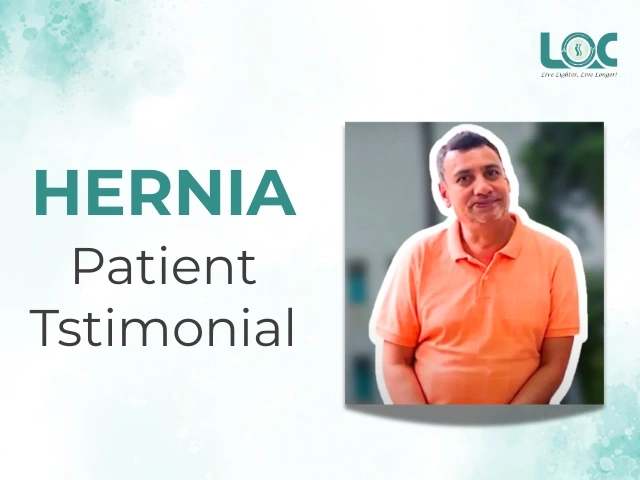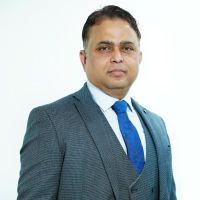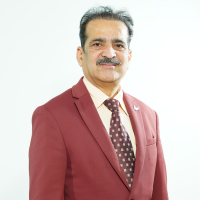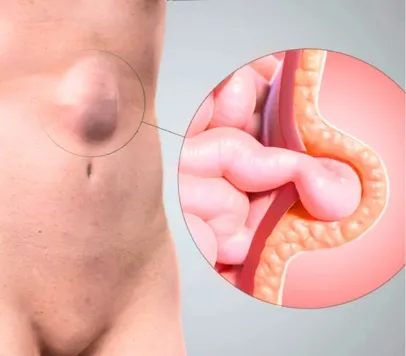
What is a hernia?
When muscles or fascia or tissues become weak or thinned or get torn, a defect is formed through which internal organs or tissues protrude outside as a bulge or swelling. This swelling or bulge is called a hernia. The commonest sites for this are navel(umbilicus), groins ( inguinal region) and old operation scars.
Hernias tend to grow over time. As the person starts activities like coughing, smiling, straining to pass motion, lifting bags, etc. there is stretch on the muscles and the defect subsequently increases in size and allows more and more of internal organs or tissues to enter the hernia. This is how the hernia keeps increasing size and most often it is a painless swelling and a person may ignore it.
Hernia being a mechanical defect, no medicines can cure it. The defect needs surgical correction either by suturing it and /or adding a patch called mesh to strengthen the muscles. This can be done using minimally invasive techniques like laparoscopic hernia repair or by using 3D (three-dimensional mesh). The recovery from both the methods is almost day care.
What causes a hernia?
A hernia may occur on the background of a weakness in the tissues of the abdominal wall
formed during development as a foetus, e.g. The defect in the navel where the umbilical cord
connects the baby to the mother. After cutting the cord at birth, the defect closes
automatically leaving a scar. Sometimes this scar in the navel remains a weaker point and
develops into a defect called umbilical hernia.
The umbilicus or the naval always has a
dimple or the skin is inverted inside. If the skin is protruding outside or everted or a
swelling is seen around or inside the naval, it is known as an umbilical hernia or a
para-umbilical hernia. Any previous injury like an old scar of injury or operation can
create weakness in the muscles or fascia or sheath and can give rise to a hernia.
What are the reasons for the hernia or what can increase chances of a hernia
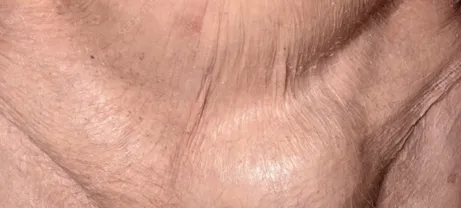
1. Ageing
With increasing age, strength of muscles can reduce, hormonal changes of ageing can also weaken the muscles and a hernia may develop.
Hernia may develop even without any reason and there could be genetic reasons for the same. Doctors call it idiopathic, which means that no specific reason could be attributed to causation of the hernia.
2. Pregnancy
Weight gain during pregnancy and distension of the abdominal wall is known to stretch the muscles of abdominal wall. This may increase chances of development of umbilical hernia. The abdomen can reduce to normal size over time, after the pregnancy but the hernia remains. This hernia needs treatment in the form of hernia repair with mesh or else the hernia continues to grow and may become bigger in subsequent pregnancy or even over time.
Treatment of such hernia does not cause any challenges in subsequent pregnancy or delivery or caesarean section.
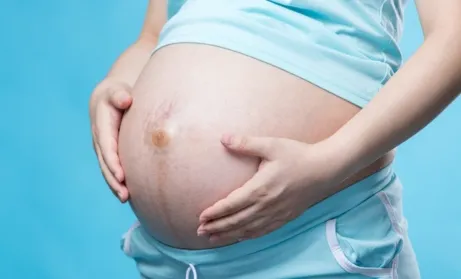
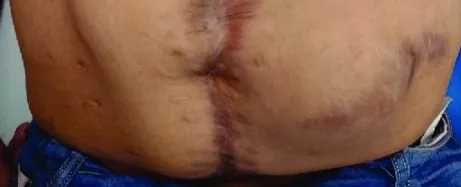
3. Obesity
Chronic straining. The hernia is often precipitated by periods of straining of the abdominal muscles as occurs during heavy lifting, pushing, or pulling, coughing, sneezing, constipation, or difficulty in urination.
What are the advances in hernia surgery
A hernia typically presents as a bulge beneath the skin in the area of the defect in the abdominal wall. There is often a dull ache associated with the hernia that may precede the appearance of a bulge. The hernia is often reducible meaning that the bulge can be pushed back inside the abdomen or may return inside the abdomen when lying down.
The contents of the hernia can sometimes become trapped outside the abdomen creating a condition called an incarcerated hernia. This may be associated with moderate to severe pain. If the intestine is trapped outside the abdomen in the hernia then this can cause a bowel obstruction resulting in nausea and vomiting in addition to pain.
Trapping of the hernia may progress to a condition known as a strangulated hernia if there is a blood flow to contents of the hernia. This can result in the death of the contained tissues such as the intestine. This is associated with severe pain and is an emergency.
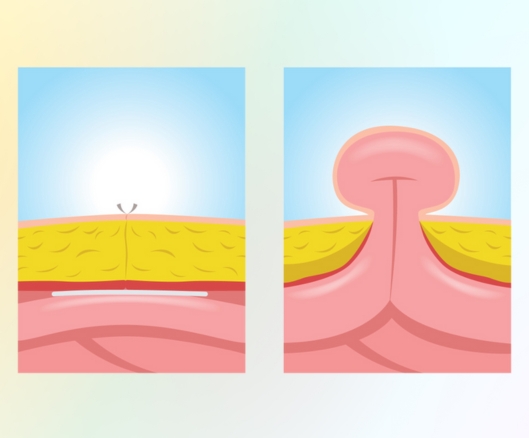
 hernia.webp)
Effective Surgical Solutions for Long-Term Relief
An inguinal hernia is a visible swelling in the groin and much more likely to develop in men than in women. It happens when tissue, including a portion of the intestine, bulges through a weak area in the abdominal wall. In men, depending on the kind and severity, the hernia will move into the scrotum, which can hurt or cause discomfort. Though some mild cases may be treated for a while, surgery is usually the best long-term treatment to avoid complications such as strangulation. New surgical methods provide safe and permanent relief, returning normal activity and enhancing the patient's quality of life.
Get Appointment Watch Video Learn More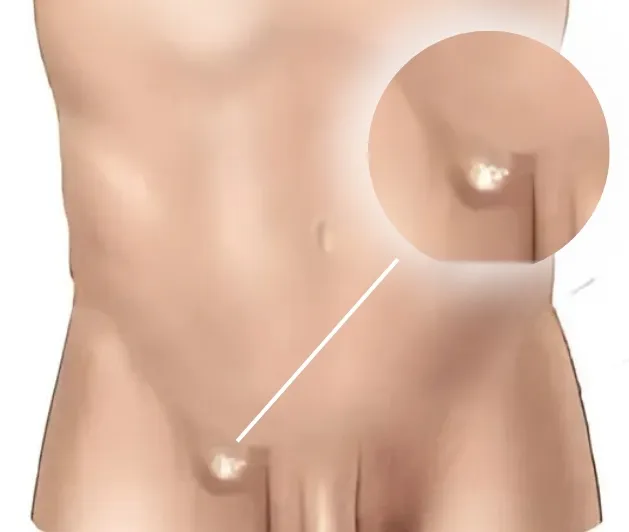
Targeted Treatment for Optimal Recovery
A femoral hernia typically manifests as a lump in the upper inner thigh, below the groin, and is more frequent among women because of the broader form of the pelvis in women. It occurs when a segment of intestine or fatty tissue protrudes through a weakened area in the abdominal wall close to the femoral canal. Although usually small in size, femoral hernias have a greater risk of developing complications such as strangulation. Due to this, they often need to have surgery in a timely manner. Early diagnosis and proper treatment prevent complications and provide long-term relief, restoring comfort and normal daily function in the patient.
Get Appointment Watch Video Learn More
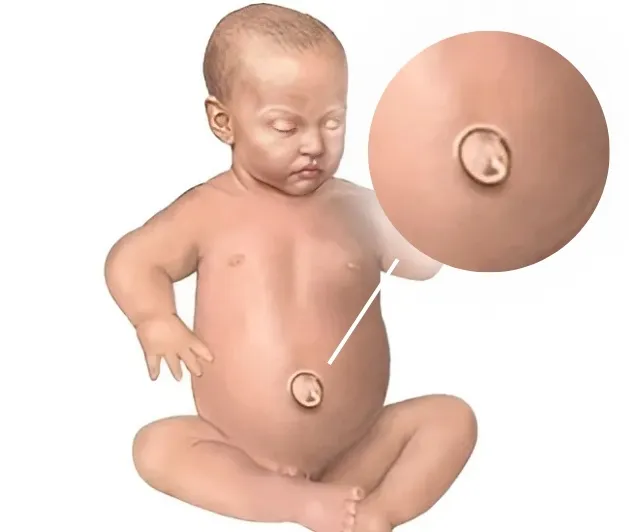
Effective Repair for a Common Abdominal Condition
An umbilical hernia occurs at the navel or belly button when a section of the intestine or fat bulges through a weak area in the abdominal muscles. Although frequently observed in infants and tending to resolve by itself, umbilical hernias can also occur in adults because of reasons such as obesity, pregnancy, or heavy lifting. In adults, they do not heal as well by themselves and can cause problems like pain or strangulation. A surgical correction is usually advocated to repair the abdominal wall, avoid recurrence, and provide a secure and stable recovery for better quality of life.
Get Appointment Watch Video Learn More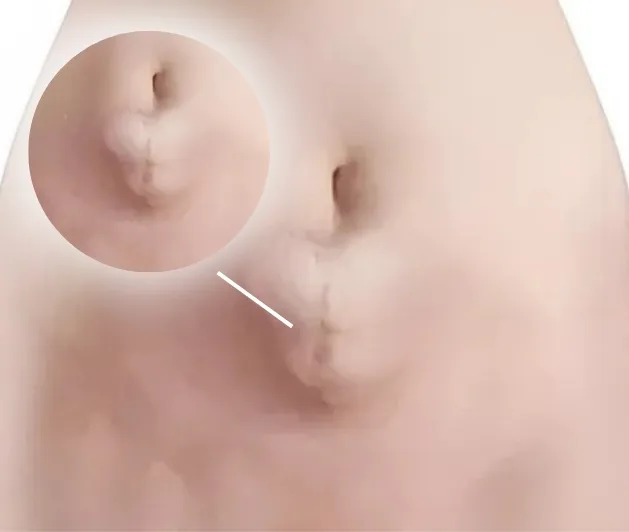
Repairing Hernias Caused by Previous Surgical Incisions
An incisional hernia is at the location of a prior incision during surgery, where the abdominal wall has broken down or failed to close adequately. This creates an opening where internal tissue, including the intestine or fat, can push into the weakened space and appear as a bulge. Incisional hernias can occur weeks, months, or years following surgery and can be uncomfortable, painful, or tender with movement or strain. If not addressed on time, the hernia could increase in size or result in severe complications. Repair by surgery is generally advised to improve the strength of the abdominal wall and facilitate long-term recovery and life quality.
Get Appointment Watch Video Learn More
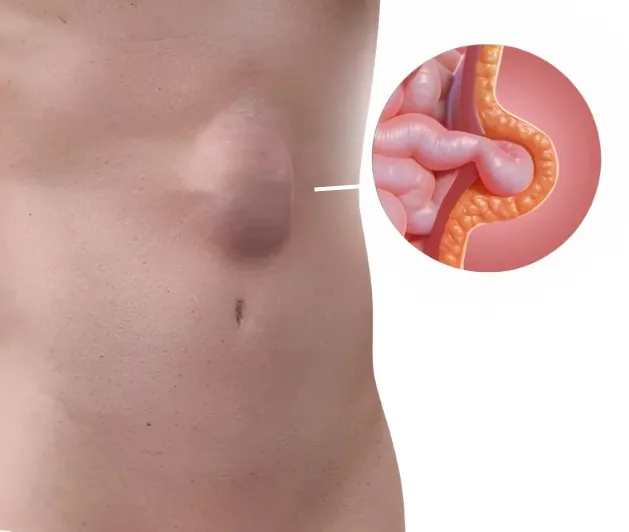
Comprehensive Repair for Abdominal Wall Hernias
Ventral hernias manifest on the anterior (ventral) side of the abdominal wall and are categorised as incisional, epigastric, and spigelian hernias. Ventral hernias result when internal tissues protrude through a weak area or opening in the abdominal muscle due to a prior operation, muscle weakness, obesity, or birth defect. Ventral hernias can result in a palpable bulge, pain, or discomfort, particularly with standing, lifting, or coughing. If untreated, they can result in complications such as obstruction or strangulation. Surgical treatment is commonly advised to be effective in strengthening the abdominal wall, removing symptoms, and guaranteeing long-term recovery and recurrence prevention.
Get Appointment Watch Video Learn More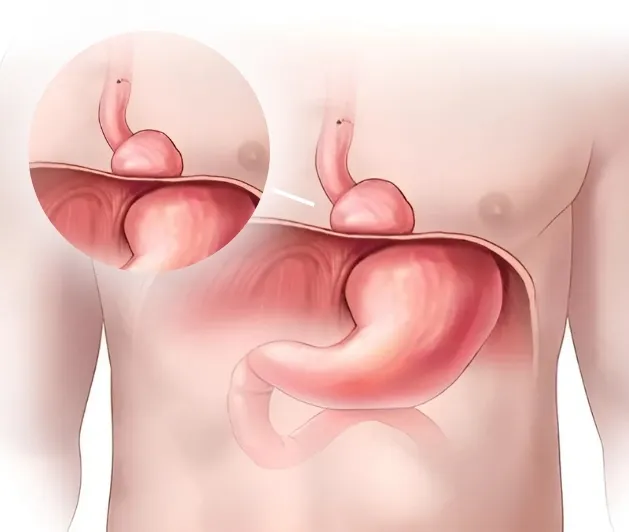
Repairing Hernias Caused by Previous Surgical Incisions
A hiatal hernia occurs when a portion of the stomach pushes upward through the diaphragm into the chest cavity. This condition is often caused by chronic straining, heavy lifting, persistent coughing, pregnancy, or obesity, which increase pressure on the abdominal area. While small hiatal hernias may not cause symptoms, larger ones can lead to heartburn, acid reflux, chest discomfort, and difficulty swallowing. It is more commonly seen in older adults, particularly women. When lifestyle changes and medications are not effective, surgical repair may be necessary to alleviate symptoms, prevent complications, and restore normal digestive function for long-term relief.
Get Appointment Watch Video Learn More
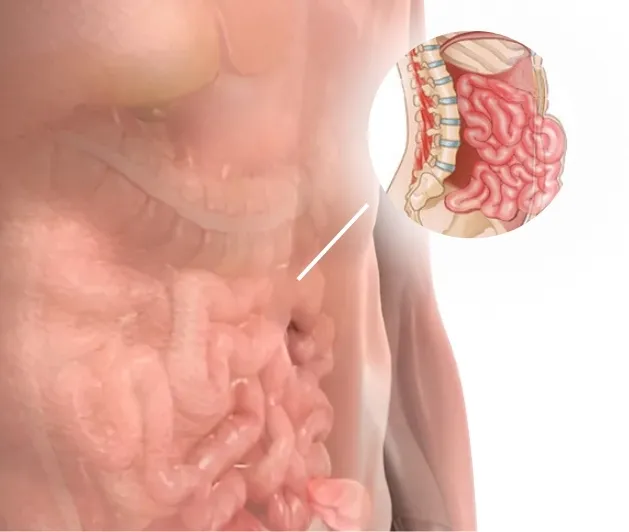
Advanced Solutions for Challenging Hernia Cases
A complex hernia is a troublesome condition that includes such complications as recurrent hernia, large or multiple defects, fistulas, infections, or involvement of past surgical mesh. These hernias tend to be more difficult to fix because of the scarred and weakened tissue, as well as the potential for future complications. Patients can have pain, swelling, or compromised function. Effective treatment usually calls for highly specialized surgical treatment, often with sophisticated techniques and tailor-made planning. Prompt and skilled treatment is necessary to regain abdominal wall integrity, reduce risk, and encourage long-term recovery and enhanced quality of life.
Get Appointment Watch Video Learn MoreHow is a hernia diagnosed?
A hernia can be usually detected with a physical examination. We may also recommend a few tests to be done in order to further assess the patient’s condition and the root cause of the hernia. Mentioning them below
- Ultrasound: This test uses sound waves to scan the patient’s body.
- A barium X-ray: It takes images of the patients digestive organ and intestines
- A computed tomography: Also known as CT scan uses X-rays to get pictures of the particular organ.
- An endoscopy: It studies the patient’s oesophagus and stomach with the help of a small camera at the end of a flexible tube.
- Double vision (diplopia) resulting from the weakened eye muscles
What is the treatment of a hernia?
The treatment is based on the features of the hernia, its impact on your quality of life, and your general state of health. Treatment options may include observation, use of a supportive device, or surgery. Surgery is the only way to fix a hernia. In some cases emergency surgery is required. The treatment option that is right for you will be based on a discussion between you and your surgeon.
Indications for hernia repair surgery include:
- Symptomatic Hernia: Hernia creating symptoms of discomfort, pain or interfering with activities of daily living.
- Incarcerated Hernia: Hernia trapped outside the abdominal wall and cannot be returned back inside the abdominal cavity.
- Bowel Obstruction: Hernia causing a blockage of the intestines requires surgical repair.
- Strangulated Hernia: Hernia that has compromised the blood supply of the contents. There is a high risk of death of the tissues such as intestines that are contained in the strangulated hernia. This requires emergency surgery.

Laparoscopic Repair
The laparoscopic repair uses small incisions on the abdominal wall through which the instruments are placed into the abdominal cavity. The abdomen is filled with air and the repair is guided by the use of a camera. The hernia contents are brought back into the abdominal cavity and a mesh is secured in place to cover the hernia defect from the inside. The mesh helps to prevent its recurrence.
The laparoscopic repair has the advantages of quicker recovery, less pain, and less risk of infection.
Open Repair
The open repair is the traditional approach to hernia repair surgery with an incision made over the area of the hernia. The contents are returned back into the abdominal cavity and the sac is removed. Depending on factors such as the location and the size of the hernia, a mesh is often used to cover the area of the hernia defect. Otherwise, the defect is closed with sutures.
The open approach is commonly used for very large hernias or those that are complicated by factors such as bowel obstruction, infection, incarceration, strangulation, or recurrences.
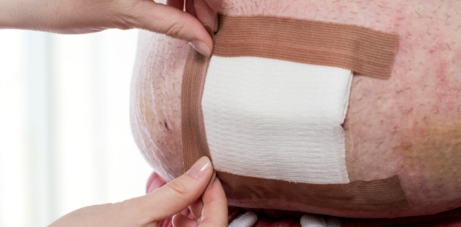
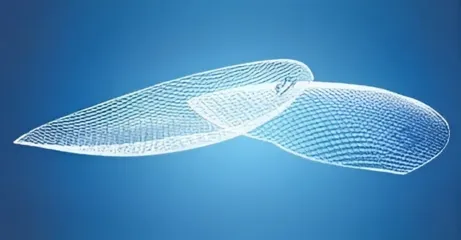
Use of Mesh
A mesh is a supporting structure used to give strength to the hernia repair. It is used to cover the defect and reduce tension in the repair. Tension, otherwise, can lead to the recurrence of the hernia.
The mesh is made of synthetic material such as polypropylene or polyester. Alternatively, the mesh may be a biologic graft derived from animal tissue. The biologic grafts are often used if there is a great concern for infection as they tend to be resistant to infections.
Choice of Repair
The decisions regarding the laparoscopic vs. open approach hernia repair surgery and regarding use of mesh vs. no mesh will be individualized based on the characteristics of the hernia and the discussion you have with your surgeon.
Abdominal Wall Reconstruction: AWR
Abdominal wall reconstruction is reconstruction of abdominal wall when muscles are thinned out or torn, either due to weakness or previous surgery.
Abdominal wall reconstruction is a specialised form of surgery performed by hernia experts only. It can be laparoscopic or open.
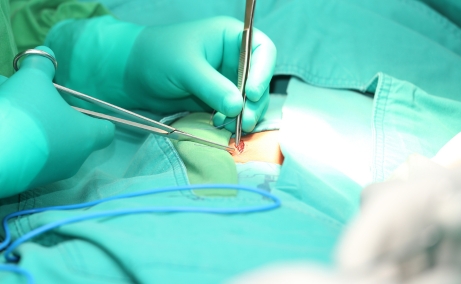
WHY CHOOSE LOC?
- Certified Centre of Excellence: Accredited by national and international bodies for advanced surgical practices.
- Cutting-Edge Infrastructure: We use the latest technology and equipment for precise and safe procedures.
- Swift Recovery & Personalized Care: Our expert team ensures a fast recovery and round-the-clock care.
- 0% EMI Facility: Making surgery affordable with no-cost financing options.
- World Record Holder: Our lead surgeon holds the world record for the youngest child to successfully undergo bariatric surgery.
- Cashless Facility Available for Hassle-Free Treatment
Our Advantages and Capabilities
| BENEFITS | LAPARO OBESO CENTRE |
|---|---|
| Fair Pricing | |
| Advanced International Procedures | |
| Cashless Insurance Claims | |
| No Cost EMI | |
| 100% Quality Result | |
| Strong Follow-up for Post Surgery | |
| Personalized Care | |
| Experienced Surgical Team | |
| State-of-the-Art Facilities | |
| Transparency with Patients | |
| Insurance Reimbursement |
Dr Sushilkumar Kharat
Dr Shashank Shah
Dr Poonam Shah
Meet the Experts in Bariatric Surgery
Our center is led by a team of world-renowned bariatric surgeons with over 32 years of experience.
We’ve performed more than 1 lakh general surgeries and over 10,000 bariatric procedures, making us pioneers in the field. We are certified as a Centre of Excellence by the Obesity Surgery Society of India and the International Excellence Federation, ensuring the highest standards in care and expertise.
Get Appointment32+
1 Lac+
10,000+
100+
Expert Hernia Treatment for Faster Recovery
Most hernias are not immediately dangerous, but if left untreated, they can lead to serious complications like incarceration or strangulation of internal organs.
A hernia usually appears as a bulge in the abdominal wall, often accompanied by a dull ache. It may be reducible, meaning the bulge can be pushed back in. In some cases, the hernia can become incarcerated, causing moderate to severe pain. If the intestine is trapped, it may lead to a bowel obstruction with nausea and vomiting. If blood flow is cut off, a strangulated hernia can develop, causing severe pain and tissue death, which requires immediate medical attention.
Increasing bulge size, pain, difficulty in pushing the bulge back in, nausea, vomiting, or changes in bowel habits may indicate a worsening or complicated hernia.
Recovery depends on the type of surgery. Laparoscopic repairs usually have quicker recovery (1–2 weeks), while open surgery may require more time.


“ My father was diagnosed with Hernia. Dr. Shashank Shah was recommended by our family physician for hernia laparoscopic surgery. Right from speaking personally on call with Dr. Shah, to consultation and the surgery, the process was smooth and professional and the staff and nurses were helpful. There can be improvement in terms of maintaining silence and ensuring patients are not disturbed much during night (Nurses were coming to check the iv fluid after every 20 minutes). Dr. Shashank Shah himself is very polite and soft spoken and ensured my father did not have any doubts, fears or complications throughout the process. Post surgery, my father recovered very well and quick without any complaints of dizziness or nausea. Overall it was a good experience. Would definitely recommend Dr. Shah and LOC Healthcare. “
“ Sharing the experience we had with Dr. Shashank Shah & his team recently. I underwent 2 major surgeries in a span of 1 month with Dr.Shah, first one for the removal of three large parotid gland tumours & the second one for umbilical hernia plus divarication. I cannot stop myself from saying that Dr.Shashank Shah has been blessed with a pair of magical hands by the almighty. Such was the precision of the surgery that not only was I walking around within 2 hours of the surgery but I could even go back home on the same day. I have never heard of anyone having such a super speedy recovery. Dr.Shahs entire team at LOC is the best medical team I have come across so far. They are warm, friendly, prompt & they make sure that the patient is at ease. I would like to extend by heartfelt thanks to Dr.Shah & his entire team for an amazing experience & would without a second though recommend LOC to anyone wanting to undergo surgeries. “
“ We are truly blessed to discover Dr.Shashank Shah over an online search for 'Best Doctors in India' to treat Hernia with laparoscopic / open surgery. My Father aged 67 years got treated for open surgery at LOC Healthcare, Pune and with his satisfaction of the wonderful experience he gave a new name to LOC as "Life OK Centre" :) Overwhelmed to meet Highly Professional Doctors having immense expertise and glad for getting treated at a Nicely built Facility with a very courteous ground team who have constantly extended their humble support across. Got an overnight discharge with zero complications post the surgery. A Leader of such a high stature with Professional Expertise like Dr.Shashank Shah and Dr.Sushil Kharat makes it a very meaningful experience at LOC Healthcare. “
“ I am 51 yrs old, I had bilateral large inguinal hernia . And it was painful. It was very complicated surgery. But due to dr.shashank shah and dr.sushil kharat sir surgery went very Smooth . It was painless procedure. Recovery was very quick.and best part of this surgery was it covered under insurance cashless. I am happy. I am pain free now. Thank you so much best laparoscopic surgeon dr.shashank shah & dr.sushil kharat sir. And team loc . Very hygienic and clean hospital. “

Toshak Kadam

SahaPadmavati Madan

Akshaya Padate



